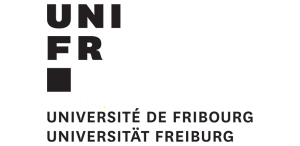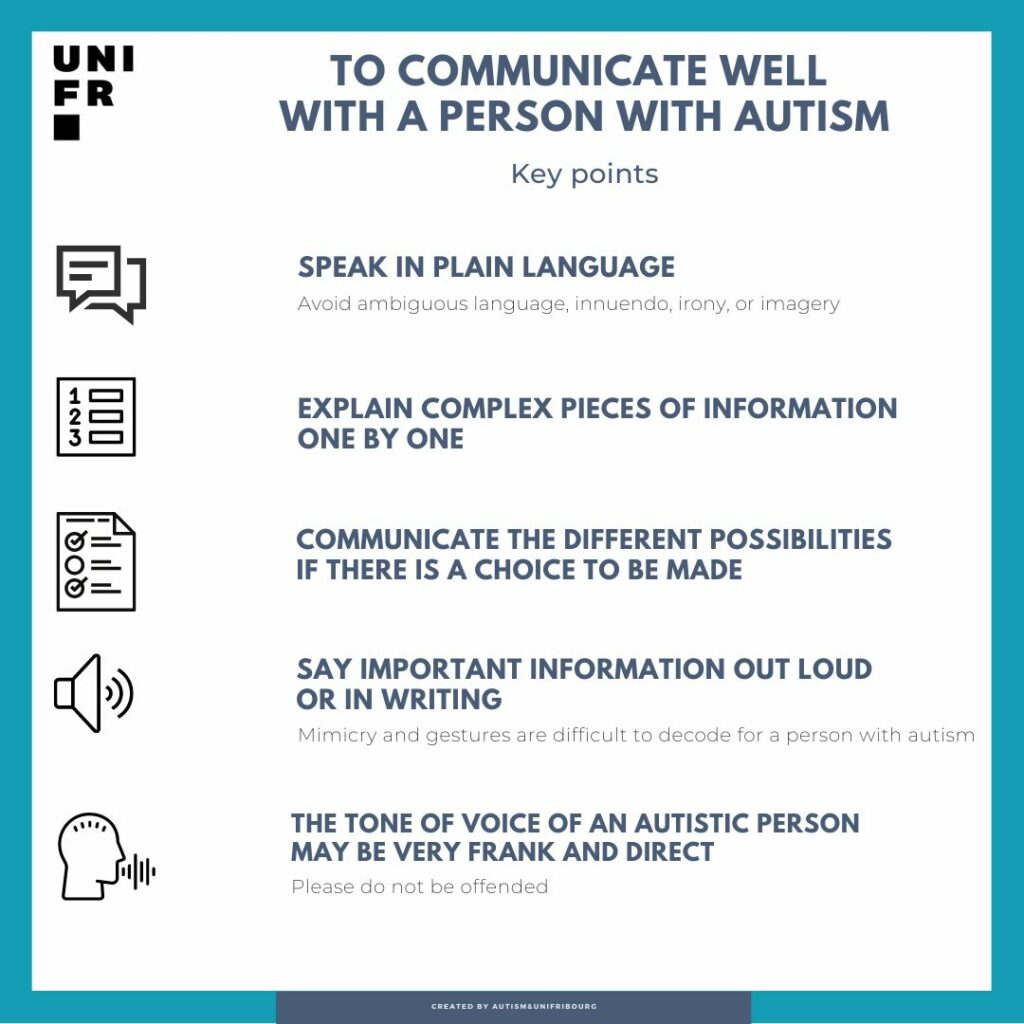This section explains why it is important to address the issue of autism at the University
Context
Autism spectrum disorder [hereafter ASD] is a neurodevelopmental disorder (American Psychiatric Association, 2013). It affects the way a person communicates and relates to others and their environment. Diagnostics is based on two areas in which different behaviors must appear in sufficient intensity to meet the criteria: 1) persistent deficits in communication and social interactions and 2) restricted and repetitive nature of behaviors, interests, or activities. Sensory behavioural features (hyper- and hypo-reactivity and sensory features) are part of this second domain. While 55% of those diagnosed have an associated intellectual disability, the intellectual development of the others is within the norm, or even superior for 3% of them (Flouri, Midouhas, Charman, & Sarmadi, 2015).
The definition of Autism Spectrum Disorder may seem to imply a deficit of some kind. This view may bring with it some confusion between atypical functioning and academic skills. It is important to differentiate between the two.
What does that have to do with me?
Whether you are a teacher, an administrative assistant, a colleague, a neurotypical student or a person affected by autism, it is important to understand the reality of autism at the University.
The prevalence of ASD is now commonly estimated to be approximately 1 in 100 individuals (Bent, Barbaro, & Dissanayake, 2017). Evolving definitions and diagnostic methods show a steadily increasing trend, particularly in the recognition of ASD without associated intellectual disability, more commonly known as Asperger’s syndrome or high-functioning autism (Presmanes Hill et al., 2014; Zbinden Sapin, Thommen, Laetitia, Eckert, & Liesen, 2016).
The hypothesis of an increase in the number of young adults with ASD pursuing their education in higher education can be formulated for Switzerland based on studies carried out in Western Europe, where 0.3% to 0.6% of undergraduate students are estimated to be affected by ASD (HESA, 2019; Kreiser & White, 2015; Presmanes Hill et al., 2014; Van den Broek, Muskens, & Winkels, 2013).
If this proportion is applied to the number of students in 2019-2020, it would mean that between 31 and 63 students would have ASD at the University of Fribourg. Given the many obstacles that have already been overcome in order to reach this stage of education, many students with ASD don’t announce it when they enter the University and throughout their academic career. They ofent do not seek the support they could benefit from.
In the tangle of diagnostic issues, tertiary education for individuals on the autism spectrum with intelligence at or above the norm has long suffered from limited scientific attention (Fabri & Andrews, 2015).
The Autism&Uni project
The European project “Autism&Uni”, developed with European funding since 2013 by the group “European Union under the Lifelong Learning Program” (Great Britain, Finland, Holland, Poland and Spain), aims precisely at filling this gap.
One of the concrete products that emerged from the Autism&Uni project is the development of an e-platform to support students affected by ASD. Designed and set up with these students (standardized, explicit, accessible structure), this e-platform is already operational and has been adapted by several European universities (see http://www.autism-uni.org).
It is in this same dynamic and in collaboration with its instigators that this Fribourg platform is being developed. Such an initiative is not only unique in Switzerland but also inexistent in French.
The Autism Spectrum
Autism is a “spectrum” condition. Often described on a severity scale, this spectrum should actually be understood in terms of the particularities that vary between individuals and at different times (learning patterns, problem solving, concentration, communication). Therefore, the analysis of specific support needs according to each individual profile is absolutely necessary. Indeed, without support milestones during studies, difficulties unfairly penalize students on the autism spectrum; it is now known, for example, that transitions (college-university/university-vocational life) are particularly sensitive periods and that dropout rates are higher among these students (HESA, 2013; Lee, 2012).
Many of the young people concerned could reach their employability potential with minimal support measures during their academic career. Many countries already have programmes in place to reduce this inequality of opportunity (National Autistic Society, 2014, cited in Carpenter et al., 2019). More concrete data on the issue of disability adjustment measures can be found in the dedicated section. In Canada, for example, several programs exist, including a particularly interesting peer mentoring program at Simon Fraser University (Leach, 2019). Other universities offer a preparatory stay to facilitate the transition from college to university, or a support office for social skills training.
Aware of the importance of this topic, the Federal Council itself has issued a report recalling the crucial importance of optimising the support of the potential of young adults on the autism spectrum through their training for employability purposes (Federal Council, 2018).
Today, the desire to maintain the excellence of university education in Switzerland is fortunately still very strong. Nevertheless, we realize that excellence and conformity do not go hand in hand and people’s visions are slowly opening up to individual differences, and to diversity, including neurodiversity.
Universal design for learning
The ‘universal design for learning’ movement lies at the heart of this philosophy, promoting a wide range of support to suit a wide range of users (Burgstahler & Russo-Gleicher, 2015; CAST, 2018). Further thoughts can be found in the chapter for university teachers. The question today is therefore no longer whether autistic students should be integrated, but how to go about doing so (Bonvin, Ramel, Curchod-Ruedi, Albanese, & Doudin, cited by Paccaud, 2017), in line with the principle of inclusion of neurodiversity in academic settings (Chamak, 2015).
Teachers do not always know how to interpret this cognitive mix in their interactions with students, or how to adapt to their needs. The present Autism&Uni platform should help them with their questions. Indeed, given the prevalence of ASD among university students, it is likely that the vast majority of teachers at the University will be confronted, during their career, with one or more students on the autism spectrum.
What is the next step?
Ask yourself: Do you feel sufficiently informed about autism?
Practical advice
- If you are in contact with people on the autism spectrum, discuss with them to uncover the similarities and differences in how you function
- If you are a teacher, take a snapshot of your teaching style to assess possible adjustments to the various learning profiles of your students
- If you are an administrative staff member, ask about the possible barriers that your structure poses for certain students
- If you think you may be affected by autism but are not sure, contact the Autism&Uni team who will be happy to help you investigate these issues
Questions to ask yourself
- How do you communicate?
- Are you always structured in what you say?
- Are you speaking unambiguously?
- What is your perception of normality?
- Do you still think that neurodiversity and excellence are compatible?
Additional information
If you have any questions, please do not hesitate to contact the team behind the Autism&Uni Fribourg project CONTACT
CONTACTAbout the author
Edited by: Nathalie Quartenoud ©
Translated by: Daniel Dukes


 Back
Back 